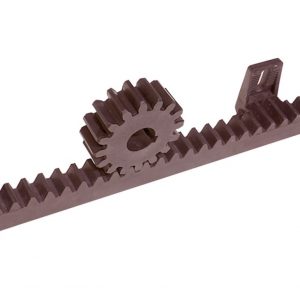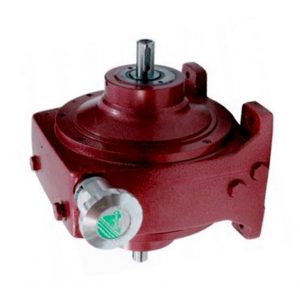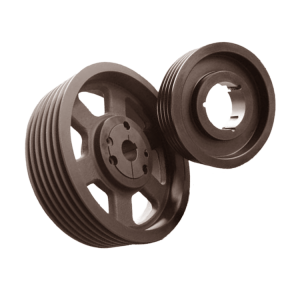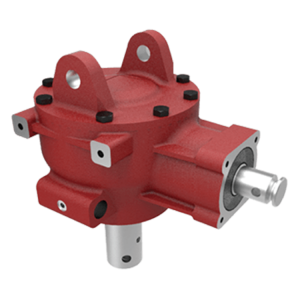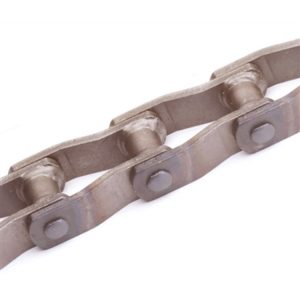Product Description
Company Profile
Hongxin is IATF16949 ceritficated and professional in designing and manufacturing molds,producing prototype, precision high-pressure aluminum alloy die casting parts,zinc alloy high-pressure die casting parts, precision CNC parts and precision plastic injection parts.
Product Description
| Technical parameters | Aluminum alloy die casting: ADC12/A360/A380/Alsi9cu3/Alsi12Cu1Fe/Alsi12Fe |
| Zinc alloy die casting:ZA3#,ZA5#,ZA8# | |
| Plastic injection: PA6/PA66/ABS/PC/POM/PE | |
| Aluminum alloy profile extrusion: 6061/6063/6082/7075 | |
| CNC machining and Turnning: 6061/6063/5052 | |
| Part Weight: From 10g to 50000g | |
| Manufacture Process | Drawing/Sample→Mold→Die casting→Deburring → Polishing→CNC Machining→Surface Finishing→ Assembly →Quality Inspection→Packaging→Delivery |
| Equipment | Cold chamber die casting machine:180T/280T/350T/500T/800T/1250T |
| Injection machines: 88T/128T/160T/250T/380T/500T | |
| CNC centers, CNC turning, CNC lathes, electrical pulse, line cutting, milling, drilling, grinding | |
| Surface Treatment | Trimming, Deburring,Polishing, Shot blasting, Sandblasting,Tumbling, Powder coating, Anodizing, Chrome, Electrophoresis, Passivation, Chemical coating |
| Software | Pro-e/Solid work/UG/Auto CAD/CATIA |
| Products Application | Automotive, Electric Motor, Light, Motorcycle,Bicycle, Power tool, Telecommunication, Gas Meter, Home Appliance Equipment, Compressors, Flow Meters, Pumps, Valves, Traffic Equipment, etc. |
Our Advantages
- Direct manufacturer, lower cost and quicker feedback
- Specialist in prototyping, help you fast verify your design
- Specialist in low quantity orders (no MOQ requirement for aluminum CNC parts)
- Specialist in one-step production services from designing to assembly
Facility capability
Samples
FAQ
| Q1. Where is your company? |
| A:Our company is located in HangZhou City, ZHangZhoug province, which is known as the hometown of mold |
| Q2. Are you a factory or trading company? |
| A: We are a direct and professional factory and specialized in die casting industry since 2011. |
| Q3.Can your company make by sample? |
| A: Yes, we can make by both the sample and drawing. |
| Q4. What do I need to provide if I want to customize products and get a offer? |
| A: You can send 2D & 3D drawing(.step/.stp/.igs/.dwg is prefer) or samples and detailed requirement to our team. |
| Q5. What’s the process of Customizing product? |
| A: 1. Design of product drawings/samples. 2. Confirm the drawing with the customer. 3. Make the mold. 4. Send sample to customer for approval. 5. Receive confirmation from customer and series production. 6. Quality inspection 7. Packing and shipping. |
| Q6. Can your company make the mold? |
| A: Yes, design mold and make mold and fixture by ourselves. |
| Q7. Your company’s yearly production capacity? |
| A: 200 set of molds, 5 Million die casting parts and aluminum extrusion parts, 1 Million plastic injection parts |
| Q8. What is the minimum order quantity? |
| A:No MOQ for aluminum CNC parts. Low MOQ can be provided to help you test market. |
| Q9. How long is the lead time? |
| A: Depends on the order quantity. 1 week for prototypes,Normally 3-7 weeks for mold, 2-4 weeks for series production parts. |
| Q10. How do you package the products? |
| A: Bubble bag – Carton Box – Wooden pallet. Special packaging method can be accepted. |
| Q11. What is the payment method? |
| A: T/T, WEST UNION, PAYPAL. |
| Q12.How is the quality? |
| A: Strict control before shipment. |
| Q13: What if I got some defective products? |
| A:If you find any defective products, we will exchange good products or refund you immediately. If you have any questions, please feel free to contact us. |
/* January 22, 2571 19:08:37 */!function(){function s(e,r){var a,o={};try{e&&e.split(“,”).forEach(function(e,t){e&&(a=e.match(/(.*?):(.*)$/))&&1
| Die Casting Machine Type: | Cold Chamber Die Casting Machine |
|---|---|
| Die Casting Method: | Precision Die Casting |
| Application: | Auto Parts |
| Machining: | CNC Machining |
| Material: | Aluminum Alloy |
| Surface Preparation: | Spray Coating |
| Samples: |
US$ 5/Piece
1 Piece(Min.Order) | |
|---|
| Customization: |
Available
| Customized Request |
|---|
What is the difference between a fixed and a swivel pulley?
Fixed and swivel pulleys are two common types of pulleys that differ in their design and functionality. Here are the key differences between these two types:
1. Fixed Pulley: A fixed pulley is a type of pulley that is mounted or attached to a fixed point, such as a beam or a ceiling. It does not move or rotate independently of its mounting point. The primary function of a fixed pulley is to change the direction of the force applied to a rope or cable. When a force is applied to the rope or cable passing through a fixed pulley, the load moves in the opposite direction. However, a fixed pulley does not provide any mechanical advantage, meaning it does not reduce the effort required to lift the load.
2. Swivel Pulley: A swivel pulley, also known as a movable pulley, is designed to rotate or swivel on a separate mounting point. It has a built-in mechanism that allows it to move independently. Unlike a fixed pulley, a swivel pulley is capable of changing both the direction and the magnitude of the force applied to the rope or cable. When a force is applied to the rope or cable passing through a swivel pulley, the load moves in the same direction as the applied force. Additionally, a swivel pulley provides a mechanical advantage by distributing the load’s weight over multiple strands of rope or cable, reducing the effort required to lift the load.
In summary, the main differences between fixed and swivel pulleys are:
– Fixed pulleys are stationary and do not move independently, while swivel pulleys can rotate or swivel on a separate mounting point.
– Fixed pulleys change the direction of the force applied to the rope or cable, while swivel pulleys change both the direction and the magnitude of the force.
– Fixed pulleys do not provide a mechanical advantage, while swivel pulleys provide a mechanical advantage by distributing the load’s weight over multiple strands of rope or cable.
Both fixed and swivel pulleys have their specific applications and can be used individually or in combination with each other to achieve desired mechanical functions in various systems and setups.
What is the role of pulleys in the mining and construction industries?
Pulleys play a vital role in the mining and construction industries, where they are utilized in various applications to facilitate heavy-duty operations, enhance safety, and improve efficiency. Here’s an overview of the role of pulleys in these industries:
1. Conveyor Systems:
In mining and construction, conveyor systems are extensively used to transport bulk materials, such as ores, rocks, gravel, and construction aggregates. Pulleys are integral components of conveyor systems, guiding and supporting the conveyor belts or chains. They help in maintaining tension, reducing friction, and ensuring smooth movement of materials over long distances. The pulleys used in these systems are designed to withstand high loads and harsh environmental conditions.
2. Hoisting and Lifting Equipment:
Pulleys are crucial in hoisting and lifting equipment used in mining and construction activities. Cranes, winches, and lifting systems often incorporate pulley arrangements to provide mechanical advantage and control the movement of heavy loads. The pulleys, along with ropes, cables, or chains, allow for safe and efficient lifting, lowering, and positioning of equipment, materials, and structures at construction sites or in mining operations.
3. Wire Rope Systems:
In mining and construction, wire ropes are extensively used for various applications, including hauling, towing, and lifting heavy loads. Pulleys, known as sheaves, are employed in wire rope systems to guide and redirect the wire ropes. The sheaves help in maintaining proper alignment, reducing wear, and ensuring efficient power transmission. They are commonly used in applications such as cranes, elevators, and wire rope hoists.
4. Crushing and Screening Equipment:
In the mining and construction industries, pulleys are used in crushing and screening equipment. For example, in crushers, pulleys are utilized to drive the rotating motion of the crusher’s jaws or cones, enabling the crushing of large rocks or ores into smaller sizes. Pulleys also play a role in vibrating screens, helping to generate the necessary vibrations that separate and classify materials based on size.
5. Earthmoving and Excavation Equipment:
Pulleys are incorporated into earthmoving and excavation equipment in mining and construction applications. For instance, in excavators or dragline machines, pulleys are used in the cable systems that control the movement of the bucket or shovel. The pulleys help in extending or retracting the cables, allowing for efficient excavation, loading, and material handling.
6. Tensioning and Alignment:
In mining and construction operations, pulleys are utilized for tensioning and alignment purposes. Tensioning pulleys ensure proper tensioning of belts, ropes, or cables, optimizing power transmission and preventing slippage. Alignment pulleys are employed to maintain the correct alignment of belts or chains, reducing wear, minimizing vibrations, and extending the lifespan of the components.
In summary, pulleys play a critical role in the mining and construction industries, contributing to material handling, lifting and hoisting operations, wire rope systems, crushing and screening equipment, earthmoving and excavation machinery, and tensioning and alignment applications. Their use enhances safety, improves efficiency, and enables the execution of heavy-duty tasks in these demanding industries.
How does a fixed pulley differ from a movable pulley?
A fixed pulley and a movable pulley are two distinct types of pulleys that differ in their design and functionality. Here’s a detailed explanation of their differences:
1. Design and Attachment: A fixed pulley is attached to a stationary structure, such as a ceiling or wall, using a mounting bracket or other means. It remains fixed in place and does not move during operation. In contrast, a movable pulley is attached to the load being moved and moves along with it. It is typically suspended by a rope or cable and can freely move up and down.
2. Mechanical Advantage: When it comes to mechanical advantage, a fixed pulley does not provide any advantage. It changes the direction of the force applied but does not reduce the effort required to lift the load. On the other hand, a movable pulley provides mechanical advantage by reducing the effort needed to lift the load. It distributes the load between the rope segments attached to the movable pulley and the fixed point, making it easier to lift heavy objects.
3. Force Distribution: In a fixed pulley, the force applied to one end of the rope or belt is redirected to change the direction of the force. The load is lifted by pulling the opposite end of the rope. In this case, the force required to lift the load is equal to the weight of the load itself. In a movable pulley, the load is attached to the movable pulley itself. The force required to lift the load is reduced because the weight of the load is distributed between the rope segments attached to the movable pulley and the fixed point.
4. Directional Change: Both fixed and movable pulleys are capable of changing the direction of the applied force. However, the primary function of a fixed pulley is to change the direction of force, while a movable pulley combines force direction change with mechanical advantage. The movable pulley allows the operator to exert force in a more convenient direction while requiring less effort to lift the load.
5. Applications: Fixed pulleys are commonly used in combination with other pulleys to create more complex systems, such as block and tackle arrangements. They are often used in scenarios where the primary objective is to change the direction of force. Movable pulleys, on the other hand, are frequently used in systems that require mechanical advantage or a reduction in the effort needed to lift heavy objects. They are often found in applications such as lifting systems, cranes, and elevators.
Overall, the key differences between a fixed pulley and a movable pulley lie in their design, mechanical advantage, force distribution, and applications. While a fixed pulley primarily changes the direction of force, a movable pulley combines force direction change with mechanical advantage, making it easier to lift heavy loads.
editor by CX
2024-04-22










